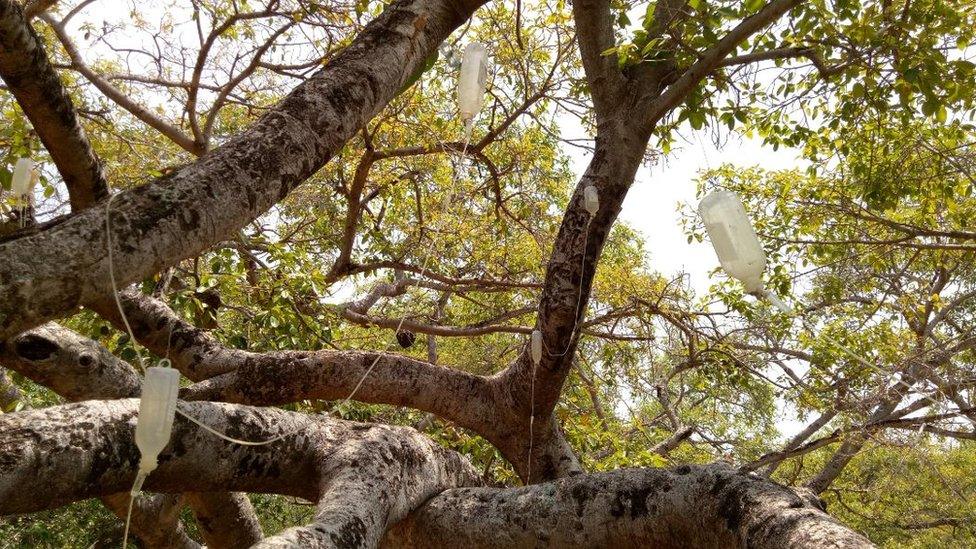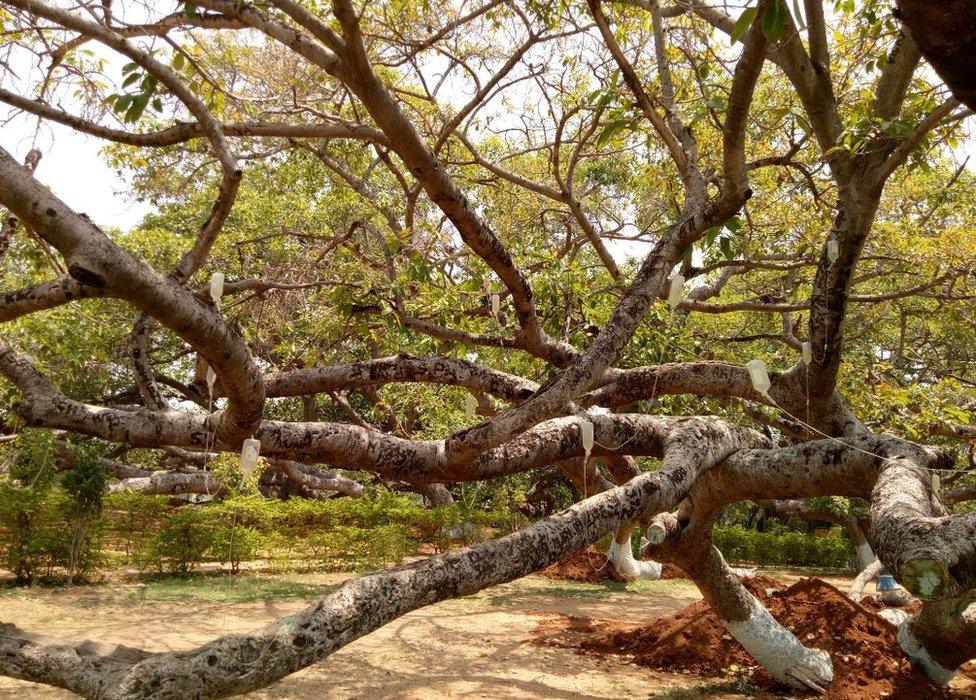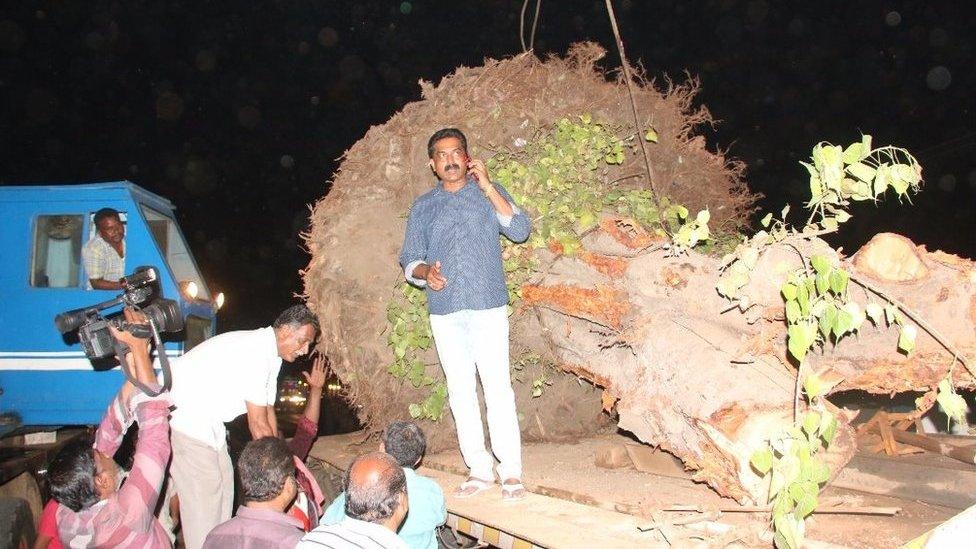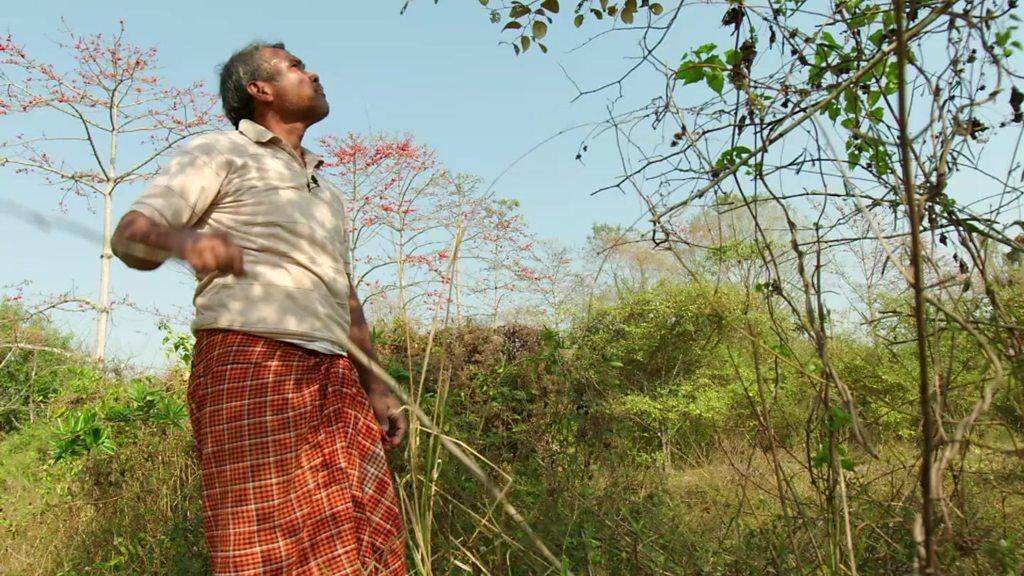Banyan: Insecticide 'drip' to save 700-year-old Indian tree
- Published

The tree is spread across three acres
A 700-year-old banyan tree in the southern Indian state of Telengana has been put on special "drips" filled with diluted pesticides, to ward off insects.
The tree is spread across three acres and is reportedly the second largest of its kind in the world.
Officials are trying to save the tree - a popular tourist attraction - from termite infestation.
Pipes have also been tied to the roots to prevent spread of further infection.

The tree is heavily infested with termites
"We have taken several measures like arranging cement plates near the branches to prevent the tree from falling," government official Panduranga Rao told the BBC. He added that fertilisers and manure are also being provided.
"We thought sending diluted insecticide into the affected parts drop by drop like a saline drip might help," another official said to local media.
Authorities started to notice branches crumbling in December of last year, which prompted them to restrict the area to tourists.
Forest officials told local media that the tree was heavily infested with termites. Many tourists also used the branches as swings, causing them to bend, they added.
Indian banyan trees are known for their sprawling growth and strong roots. They are able to grow so large as roots dropped from their branches function as false trunks, providing extra support to the tree.
- Published9 May 2017

- Published31 March 2017
